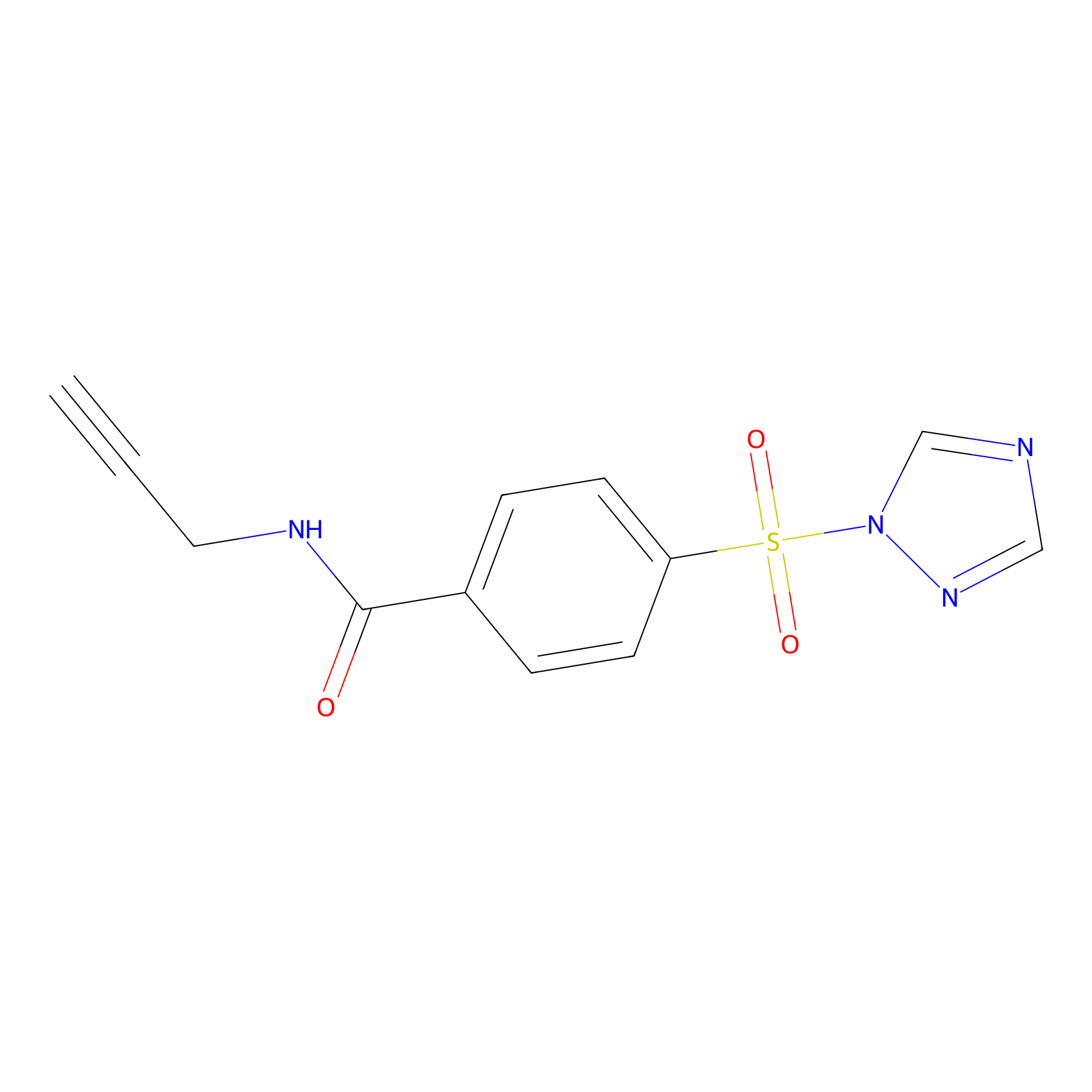Details of the Target
General Information of Target
| Target ID | LDTP04308 | |||||
|---|---|---|---|---|---|---|
| Target Name | Bis(5'-adenosyl)-triphosphatase (FHIT) | |||||
| Gene Name | FHIT | |||||
| Gene ID | 2272 | |||||
| Synonyms |
Bis(5'-adenosyl)-triphosphatase; EC 3.6.1.29; AP3A hydrolase; AP3Aase; Adenosine 5'-monophosphoramidase FHIT; EC 3.9.1.-; Adenylylsulfatase; EC 3.6.2.1; Adenylylsulfate-ammonia adenylyltransferase; EC 2.7.7.51; Diadenosine 5',5'''-P1,P3-triphosphate hydrolase; Dinucleosidetriphosphatase; Fragile histidine triad protein
|
|||||
| 3D Structure | ||||||
| Sequence |
MSFRFGQHLIKPSVVFLKTELSFALVNRKPVVPGHVLVCPLRPVERFHDLRPDEVADLFQ
TTQRVGTVVEKHFHGTSLTFSMQDGPEAGQTVKHVHVHVLPRKAGDFHRNDSIYEELQKH DKEDFPASWRSEEEMAAEAAALRVYFQ |
|||||
| Target Type |
Successful
|
|||||
| Target Bioclass |
Enzyme
|
|||||
| Subcellular location |
Cytoplasm
|
|||||
| Function |
Possesses dinucleoside triphosphate hydrolase activity . Cleaves P(1)-P(3)-bis(5'-adenosyl) triphosphate (Ap3A) to yield AMP and ADP . Can also hydrolyze P(1)-P(4)-bis(5'-adenosyl) tetraphosphate (Ap4A), but has extremely low activity with ATP. Exhibits adenylylsulfatase activity, hydrolyzing adenosine 5'-phosphosulfate to yield AMP and sulfate. Exhibits adenosine 5'-monophosphoramidase activity, hydrolyzing purine nucleotide phosphoramidates with a single phosphate group such as adenosine 5'monophosphoramidate (AMP-NH2) to yield AMP and NH2. Exhibits adenylylsulfate-ammonia adenylyltransferase, catalyzing the ammonolysis of adenosine 5'-phosphosulfate resulting in the formation of adenosine 5'-phosphoramidate. Also catalyzes the ammonolysis of adenosine 5-phosphorofluoridate and diadenosine triphosphate. Modulates transcriptional activation by CTNNB1 and thereby contributes to regulate the expression of genes essential for cell proliferation and survival, such as CCND1 and BIRC5. Plays a role in the induction of apoptosis via SRC and AKT1 signaling pathways. Inhibits MDM2-mediated proteasomal degradation of p53/TP53 and thereby plays a role in p53/TP53-mediated apoptosis. Induction of apoptosis depends on the ability of FHIT to bind P(1)-P(3)-bis(5'-adenosyl) triphosphate or related compounds, but does not require its catalytic activity, it may in part come from the mitochondrial form, which sensitizes the low-affinity Ca(2+) transporters, enhancing mitochondrial calcium uptake. Functions as a tumor suppressor.
|
|||||
| TTD ID | ||||||
| Uniprot ID | ||||||
| DrugMap ID | ||||||
| Ensemble ID | ||||||
| HGNC ID | ||||||
| ChEMBL ID | ||||||
Probe(s) Labeling This Target
ABPP Probe
| Probe name | Structure | Binding Site(Ratio) | Interaction ID | Ref | |
|---|---|---|---|---|---|
|
DBIA Probe Info |
 |
C39(1.48) | LDD3370 | [1] | |
|
HHS-475 Probe Info |
 |
Y114(2.23) | LDD0264 | [2] | |
Competitor(s) Related to This Target
| Competitor ID | Name | Cell line | Binding Site(Ratio) | Interaction ID | Ref |
|---|---|---|---|---|---|
| LDCM0116 | HHS-0101 | DM93 | Y114(2.23) | LDD0264 | [2] |
| LDCM0117 | HHS-0201 | DM93 | Y114(0.57) | LDD0265 | [2] |
| LDCM0118 | HHS-0301 | DM93 | Y114(0.96) | LDD0266 | [2] |
| LDCM0119 | HHS-0401 | DM93 | Y114(0.07) | LDD0267 | [2] |
| LDCM0120 | HHS-0701 | DM93 | Y114(2.00) | LDD0268 | [2] |
| LDCM0022 | KB02 | A2058 | C39(1.66) | LDD2253 | [1] |
| LDCM0023 | KB03 | A2058 | C39(2.01) | LDD2670 | [1] |
| LDCM0024 | KB05 | OCI-AML-2 | C39(1.48) | LDD3370 | [1] |
References
